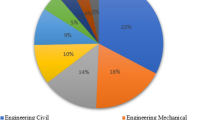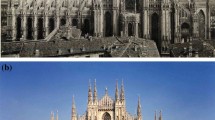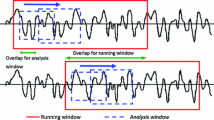Abstract
Continuous monitoring of structural vibrations is becoming increasingly common as interest in structural health monitoring (SHM) grows, as equipment becomes more affordable, and as system and damage identification methods develop. In vibration-based SHM, the dynamic modal parameters of a structure may be used as damage-sensitive features. The modal parameters are often sensitive to changes in temperature or other environmental effects, so continuous monitoring systems must also measure environmental conditions. Necessary components of a continuous structural monitoring system include a well-designed sensor array, data acquisition and logging equipment, data transfer and storage functions, and routines for extracting modal parameters from vibration measurements. All processes must be automated to handle the large volume of data generated. Such a monitoring system has been installed on the Dowling Hall Footbridge at Tufts University and is currently providing live data for research in vibration-based SHM. This paper focuses on (1) the design and installation of the system hardware and (2) the strategy used to automate the monitoring system. Successful automation of modal analysis is emphasized as the key component of this strategy. To highlight the system’s capabilities, the pattern of variation of the natural frequencies is examined and compared with environmental data.
Similar content being viewed by others
References
National Transportation Safety Board (NTSB), “Collapse of I-35W Highway Bridge,” Report No. PB2008-916203, National Transportation Safety Board, Washington, DC (2008).
U.S. Department of Transportation (USDOT), “National Transportation Statistics,” URL <http://www.bts.gov/publications/national_transportation_statistics/> [accessed January 2010].
American Society of Civil Engineers (ASCE), “Report Card for America’s Infrastructure,” URL <http://www.infrastructurereportcard.org/> [accessed January 2010].
Farrar, C.R., and Worden, K., “An Introduction to Structural Health Monitoring,” Philosophical Transactions of the Royal Society A 365:303–315 (2007).
James, G.H., Carne, T.G., and Lauffer, J.P., “The Natural Excitation Technique for Modal Parameter Extraction From Operating Wind Turbines,” Report No. SAND92-1666 (UC-261), Sandia National Laboratories, Albuquerque, NM (1993).
Juang, J.N., and Pappa, R.S., “An Eigensystem Realization Algorithm for Modal Parameter Identification and Model Reduction,” Journal of Guidance, Control, and Dynamics 8(5):620–627 (1985).
Van Overschee, P., and De Moor, B., Subspace Identification for Linear Systems, Kluwer Academic Publishers, Boston, MA (1996).
Verboven, P., Parloo, E., Guillaume, P., and Van Overmeire, M., “Autonomous Structural Health Monitoring—Part I: Modal Parameter Estimation and Tracking,” Mechanical Systems and Signal Processing 16(4):637–657 (2002).
Giraldo, D.F., Song, W., Dyke, S.J., and Caicedo, J.M., “Modal Identification Through Ambient Vibration: Comparative Study,” Journal of Engineering Mechanics 135(8):759–770 (2009).
Sabeur, H., Colina, H., and Bejjani, M., “Elastic Strain, Young’s Modulus Variation During Uniform Heating of Concrete,” Magazine of Concrete Research 59(8):559–566 (2007).
Khanukhov, K.M., Polyak, V.S., Avtandilyan, G.I., and Vizir, P.L., “Dynamic Elasticity Modulus for Low-Carbon Steel in the Climactic Temperature Range,” Central Scientific-Research Institute of Designing Steel Structures, Moscow. Translated from Problemy Prochnosti, 7:55–58 (1986).
Peeters, B., and De Roeck, G., “One-Year Monitoring of the Z24-Bridge: Environmental Effects Versus Damage Events,” Earthquake Engineering & Structural Dynamics 30(2):149–171 (2001).
Marchesiello, S., Bedaoui, S., Garibaldi, L., and Argoul, P., “Time Dependent Identification of a Bridge-Like Structure with Crossing Loads,” Mechanical Systems and Signal Processing 23:2019–2028 (2009).
Chen, Y., Feng, M.Q., and Tan, C., “Bridge Structural Condition Assessment Based on Vibration and Traffic Monitoring,” Journal of Engineering Mechanics 135(8):747–758 (2009).
Siringoringo, D.M., and Fujino, Y., “Observed Dynamic Performance of the Yokohama-Bay Bridge From System Identification Using Seismic Records,” Structural Control and Health Monitoring 13:226–244 (2006).
Moaveni, B., He, X., Conte, J.P., Fraser, M., and Elgamal, A., “Uncertainty Analysis of Voigt Bridge Modal Parameters due to Changing Environmental Condition,” Proceedings of International Conference on Modal Analysis (IMAC-XXVII), Orlando, FL (2009).
Sohn, H., Dzwonczyk, M., Straser, E.G., Kiremidjian, A.S., Law, K.H., and Meng, T., “An Experimental Study of Temperature Effect on Modal Parameters of the Alamosa Canyon Bridge,” Earthquake Engineering & Structural Dynamics 28(8):879–897 (1999).
Cornwell, P., Farrar, C.R., Doebling, S.W., and Sohn, H., “Environmental Variability of Modal Properties,” Experimental Techniques 23(6):45–48 (1999).
He, X., Fraser, M., Conte J.P., and Elgamal, A., “Investigation of Environmental Effects on Identified Modal Parameters of the Voigt Bridge,” Proceedings of 18th Engineering Mechanics Division Conference of the ASCE, Blacksburg, VA (2007).
Bowman, J.J., Vibrational Testing and Modal Indentification of the Dowling Hall Footbridge at Tufts University, MS Thesis, Department of Civil and Environmental Engineering, Tufts University (2003).
Moaveni, B., Barbosa, A.R., Conte, J.P., and Hemez, F.M., “Uncertainty Analysis of Modal Parameters Obtained From Three System Identification Methods,” Proceedings of IMAC-XXV: Conference and Exposition on Structural Dynamics, Orlando, FL; February 19–22, 2007.
Peeters, B., and De Roeck, G., “Reference-Based Stochastic Subspace Identification for Output-Only Modal Analysis,” Mechanical Systems and Signal Processing 13(6):855–878 (1999).
Reynders, E., Pintelon, R., and De Roeck, G., “Uncertainty Bounds on Modal Parameters Obtained From Stochastic Subspace Identification,” Mechanical Systems and Signal Processing 22:948–969 (2008).
Allemang, R.J., and Brown, D.L., “A Correlation Coefficient for Modal Vector Analysis,” Proceedings of the 1st International Modal Analysis Conference, Orlando, FL; November 8–10, 1982.
Alampalli, S., “Influence of In-Service Environment on Modal Parameters,” Proceedings of the 16th International Conference on Modal Analysis (IMAC XVI), Santa Barbara, CA; February 2–5, 1998.
Moser, P., and Moaveni, B., “Environmental Effects on the Identified Natural Frequencies of the Dowling Hall Footbridge,” Mechanical Systems and Signal Processing, in press. DOI: 10.1016/j.ymssp.2011.03.005.
Author information
Authors and Affiliations
Corresponding author
Rights and permissions
About this article
Cite this article
Moser, P., Moaveni, B. Design and deployment of a continuous monitoring system for the dowling hall footbridges. Exp Tech 37, 15–26 (2013). https://doi.org/10.1111/j.1747-1567.2011.00751.x
Received:
Accepted:
Published:
Issue Date:
DOI: https://doi.org/10.1111/j.1747-1567.2011.00751.x




